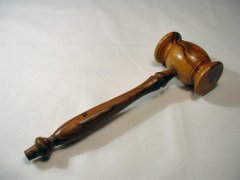By: Michael Klotz
Today, in the unpublished opinion of Unites States v. Pedro Rodriguez Garcia, the Fourth Circuit affirmed the decision of District Judge William D. Quarles, Jr., of the District Court of Maryland. The key issue on appeal was whether the District Court properly denied the Defendant’s motion to suppress photographic and in-court identifications made by a co-conspirator.
Facts
Mr. Garcia was convicted of conspiracy to commit Hobbs Act Robbery and of Hobbs Act Robbery, both pursuant to 18 U.S.C. § 1951(a), and of using and carrying a firearm during and in relation to a crime of violence, pursuant to 18 U.S.C. § 924(c). These charges followed as a result of his involvement in several commercial and home invasion robberies in the Baltimore area between July and September 2009. Mr. Garcia received concurrent sentences of 240 months on the two Hobbs Act convictions and a consecutive mandatory minimum sentence of eighty-four months on the firearm conviction.
Legal Standard for Reviewing a Motion to Suppress Ruling Regarding an Identification
The appellate review of the denial of a motion to suppress with regard to an identification is analyzed through a two-part test. First, the defendant must show that the photo identification procedure was “impermissibly suggestive.” Second, if the identification was impermissibly suggestive, the question for the court is whether the identification is “nevertheless reliable in the context of all the circumstances.” Relevant factors include the opportunity of the witness to view the criminal at the time of the crime, the witness’s degree of attention, the accuracy of the witness’s prior description, the level of certainty demonstrated by the witness at the confrontation, and the length of time between the crime and the confrontation.
Application of this Legal Standard to the Underlying Facts
The Fourth Circuit concluded that the identification of Mr. Garcia was reliable in the context of the circumstances, and thus it need not reach the issue of whether the photo lineup used was impermissibly suggestive. Mr. Garcia was identified by a co-conspirator to the a crime that he was convicted of committing. This co-conspirator had a very good opportunity to become familiar with Mr. Garcia’s appearance. Indeed, Mr. Garcia and the co-conspirator spent five days casing a robbery target before they committed a robbery together. This co-conspirator also testified that he was certain that Mr. Garcia was the man with whom he carried out the robbery. For this reason, there was no error in denying the Defendant’s motion to suppress the identification evidence.

